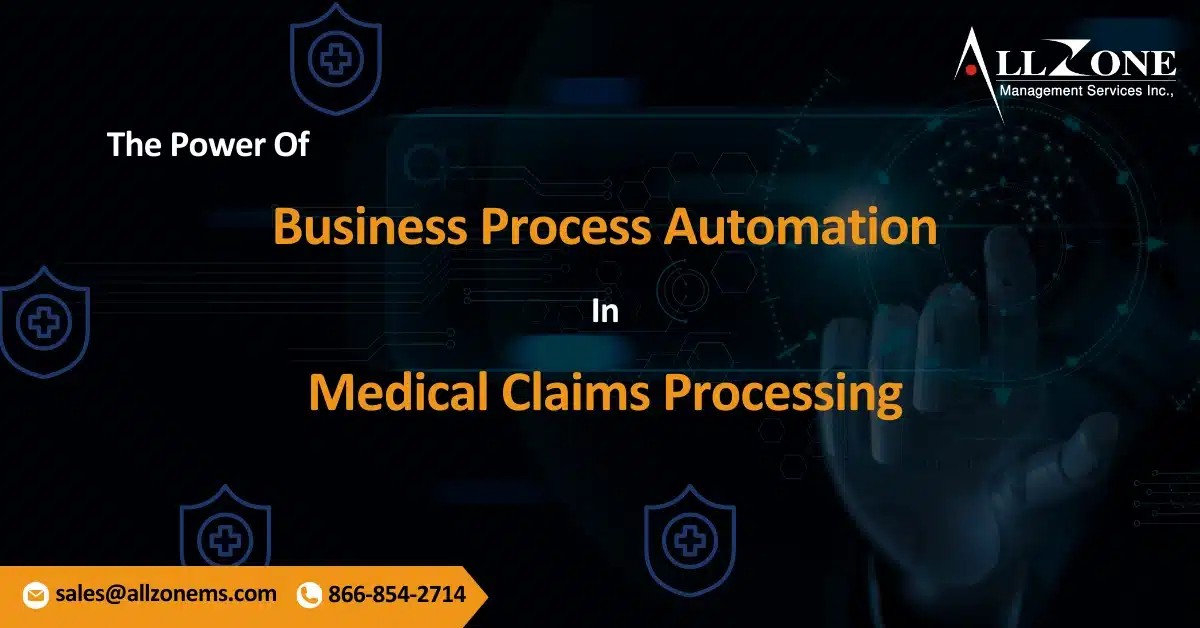Medical claims processing has traditionally been a labor-intensive and error-prone task, involving manual data entry, verification, and adjudication. However, the advent of Business Process Automation (BPA) has revolutionized this process, making it more efficient, accurate, and cost-effective.
Beyond the Basics: Advanced BPA Features
While the core functionality of BPA in medical claims processing involves automating routine tasks, modern systems offer advanced features that can further enhance efficiency and accuracy. These include:
- Intelligent Character Recognition (ICR): ICR technology can extract data from handwritten or printed documents, eliminating the need for manual data entry.
- Natural Language Processing (NLP): NLP algorithms can interpret and understand unstructured data, such as free-text medical notes, to improve claim accuracy.
- Integration with Electronic Health Records (EHRs): BPA systems can seamlessly integrate with EHRs, reducing the risk of data discrepancies and ensuring consistent patient information across systems.
- Real-time Analytics: BPA systems can provide real-time analytics and reporting, enabling organizations to identify trends, bottlenecks, and areas for improvement in the claims processing workflow.
Addressing Challenges and Ensuring Compliance
While automation offers numerous benefits, it’s essential to address potential challenges and ensure compliance with industry regulations. Some key considerations include:
- Data Security: Implementing robust security measures is crucial to protect sensitive patient data.
- Staff Training: Employees need to be trained on how to use BPA systems effectively and understand their role in the automated process.
- Regulatory Compliance: BPA systems must comply with healthcare regulations, such as HIPAA and CMS guidelines.
- Scalability: The system should be scalable to accommodate changes in workload and regulatory requirements.
The Future of Medical Claims Processing
As technology continues to advance, we can expect to see even more innovative applications of BPA in medical claims processing. For example, artificial intelligence (AI) and machine learning can be used to predict claim denials, identify potential fraud, and optimize the overall claims adjudication process. By embracing these advancements, healthcare organizations can further streamline their operations, improve patient outcomes, and achieve sustainable growth.
RCM Experts: Streamlining Medical Claims for Optimal Revenue
Medical claims processing is the backbone of a healthcare provider’s financial operations. It ensures that providers receive timely and accurate payments for the services they deliver. Allzone’s Revenue Cycle Management Company specialize in handling this complex process, ensuring that every claim is processed efficiently and effectively.
Here’s a breakdown of the medical claims processing process:
- Data Collection: Accurate patient information, including insurance details and medical history, is gathered.
- Coding: Medical procedures and diagnoses are assigned specific codes (e.g., ICD-10, CPT) to accurately represent the services provided.
- Claim Submission: The coded claim is electronically sent to the insurance company.
- Claim Adjudication: The insurance company reviews the claim for accuracy, completeness, and coverage.
- Payment or Denial: Based on the review, the insurance company either pays the claim or sends a denial with reasons.
RCM Company play a crucial role in:
- Managing Denials: Identifying the reasons for denials and taking corrective actions.
- Streamlining Processes: Using technology to automate tasks and reduce errors.
- Improving Cash Flow: Ensuring timely payments to maintain a healthy financial position.
- Providing Analytics: Offering insights into revenue trends and identifying areas for improvement.
By effectively managing medical claims processing, our RCM Company help healthcare providers focus on patient care while maximizing their financial efficiency.

